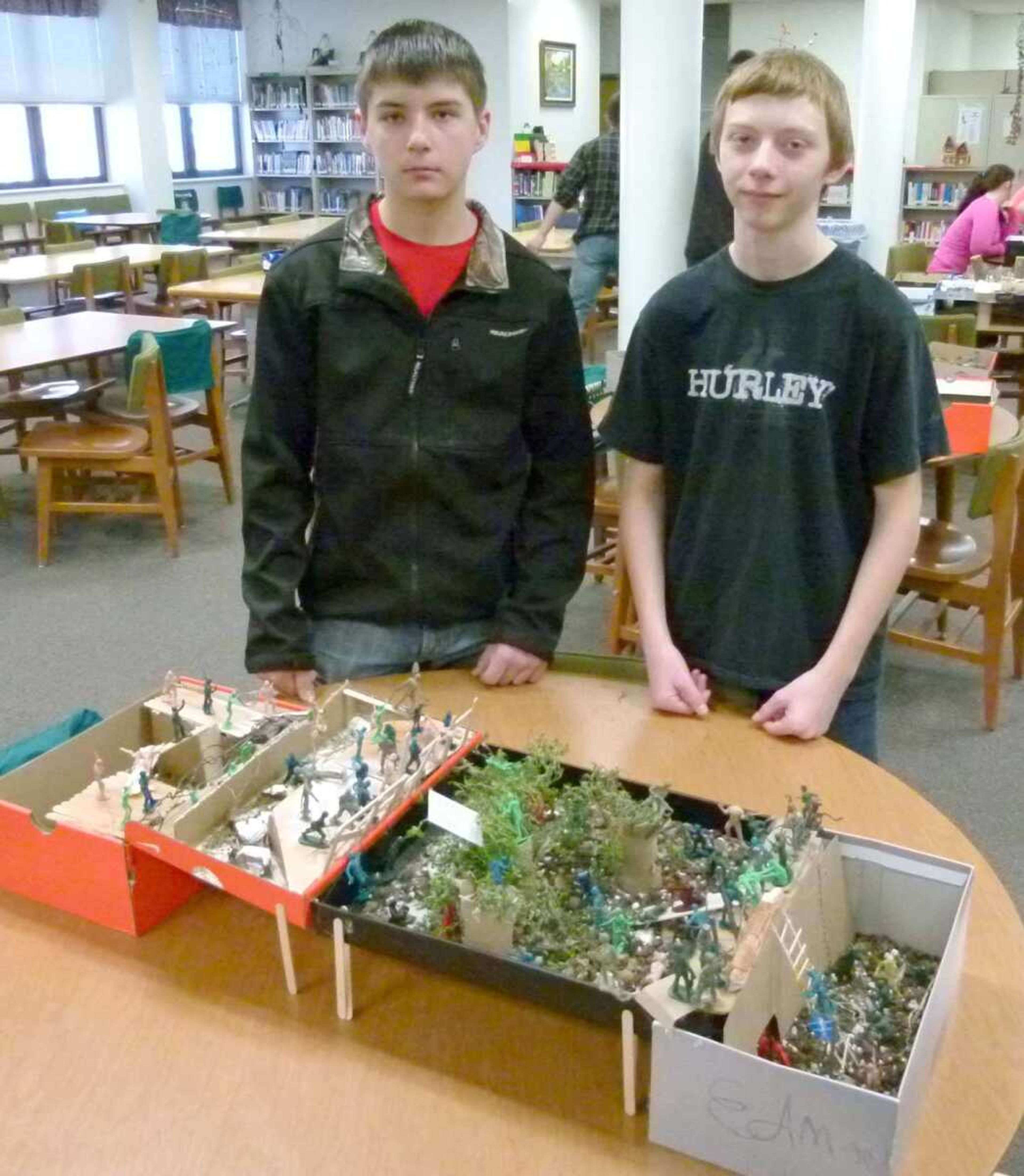PHS students explore World War I
Students in Josh Cole's world history class at Perryville High School created trench warfare dioramas as part of their study of World War I. "I was thinking of projects that would make this lesson come to life for the students, and thought of the trenches," Cole said. "Once I thought of having them build the trenches, it occurred to me that shoe boxes would be the perfect platform for the project."...
Students in Josh Cole's world history class at Perryville High School created trench warfare dioramas as part of their study of World War I.
"I was thinking of projects that would make this lesson come to life for the students, and thought of the trenches," Cole said. "Once I thought of having them build the trenches, it occurred to me that shoe boxes would be the perfect platform for the project."
Cole allowed his students to use whatever materials they chose to create the dioramas. Some were made of sugar and candy, others of sand and real tree clippings.
"The students were really creative, and we had great discussions about what life in the trenches must have been like."
Students learned that frontline trenches on the Western Front (Belgium and France) in World War I were usually about 7 feet deep and 6 feet wide. They weren't straight lines, but instead zig-zagged across the front to prevent an enemy from getting into the trench and shooting straight across the line. Trenches were fortified with sandbags and machine gun posts and protected by barbed-wire entanglements. The area between opposing trenches was called No Man's Land, which was usually a muddy, bombed-out mess of debris and barbed wire.
Life in the trenches was cold, wet and muddy. During offensives, trenches were littered with dead bodies. Soldiers fought trench-foot, an infection caused by wet, cold and unsanitary conditions. If left untreated, it led to gangrene and, often, amputation of the leg.
"It was a pretty bad place to be," said student Jesse Lankford. "It was interesting to learn about the trenches, the battles and the people of World War I."
To view a complete photo gallery, visit the District 32 Website by clicking here.
Connect with the Southeast Missourian Newsroom:
For corrections to this story or other insights for the editor, click here. To submit a letter to the editor, click here. To learn about the Southeast Missourian’s AI Policy, click here.










